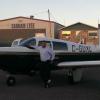installing my CYA100 AOA on left or right wing
-
Members Online
- Rwsavory
- MDMooney
- dzeleski
- Stealth Mooney
- Dammit Bill
- Robert Tanner
- T. Peterson
- MikeOH
- Skyland
- MattD89
- George Braly
- eman1200
- Brian2034
- Mooney in Oz
- 00-Negative
- Hank
- M20F
- AVDB
- dkkim73
- 1980Mooney
- 65MooneyPilot
- MIRICYL Baby
- DonMuncy
- raymondscott0321
- FoxMike
- varlajo
- RPSwat
- Florian Guthardt
- Andy95W
- ElkoRandy20J
- Nico1
- marcusku
- IvanP
- CCAS
- kortopates
- Jeff Uphoff
- wombat
- richardbrochu27
- UteM20F


Recommended Posts
Join the conversation
You can post now and register later. If you have an account, sign in now to post with your account.